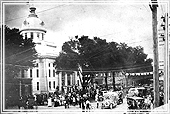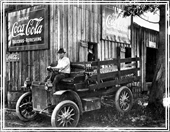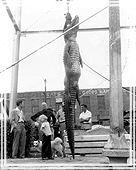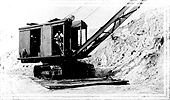 By about 12,000 years ago Paleoindians following big game such as the Mammoth and Mastodon reached the Florida peninsula. As glaciers melted and sea levels began to raise these hunters and gathers created more permanent homes in Florida. Their populations reached an estimated 250,000 by the time the first European explorers landed on our coastlines. The first historic descriptions of our earliest residents called their tribes the Tocobago, Timucua, and Caloosa. As early as 1527 a Spanish map depicted the Rio de la Paz or Peace River.
By about 12,000 years ago Paleoindians following big game such as the Mammoth and Mastodon reached the Florida peninsula. As glaciers melted and sea levels began to raise these hunters and gathers created more permanent homes in Florida. Their populations reached an estimated 250,000 by the time the first European explorers landed on our coastlines. The first historic descriptions of our earliest residents called their tribes the Tocobago, Timucua, and Caloosa. As early as 1527 a Spanish map depicted the Rio de la Paz or Peace River.  Members of the Panfilio de Narvaez and Hernando de Soto campaigns may have set foot in the vicinity in 1528 and 1539. A Spanish official in 1657 noted dwindling native populations due to sickness and disease. Later pioneers observed wild orange trees in the area, evidence of the early trade between Native Americans and the first settlers at Saint Augustine. As native populations were reduced to almost nothing the void was slowly filled with newcomers from the Georgia area, Creek Indians.
Members of the Panfilio de Narvaez and Hernando de Soto campaigns may have set foot in the vicinity in 1528 and 1539. A Spanish official in 1657 noted dwindling native populations due to sickness and disease. Later pioneers observed wild orange trees in the area, evidence of the early trade between Native Americans and the first settlers at Saint Augustine. As native populations were reduced to almost nothing the void was slowly filled with newcomers from the Georgia area, Creek Indians.
 In pursuit of runaway Creek Indians, known as Seminole, the U.S. Military began to cut roads and build forts crisscrossing the Florida peninsula. In 1842 the Armed Occupation Act offered incentive for pioneers to move further south into Florida. It, however, prohibited settlement near the Peace River, considered home to the Seminole people. But gradually cattleman began to push their herds east from the Tampa Bay region towards the open ranges of later Polk County. An 1848 hurricane in Hillsborough County is credited as one reason settlers moved inland. By 1849 the Brown and Raulerson families had located in the vicinity of Lake Hancock and others soon followed. With increased immigration came small farms, orange groves, one-room schools and churches.
In pursuit of runaway Creek Indians, known as Seminole, the U.S. Military began to cut roads and build forts crisscrossing the Florida peninsula. In 1842 the Armed Occupation Act offered incentive for pioneers to move further south into Florida. It, however, prohibited settlement near the Peace River, considered home to the Seminole people. But gradually cattleman began to push their herds east from the Tampa Bay region towards the open ranges of later Polk County. An 1848 hurricane in Hillsborough County is credited as one reason settlers moved inland. By 1849 the Brown and Raulerson families had located in the vicinity of Lake Hancock and others soon followed. With increased immigration came small farms, orange groves, one-room schools and churches.  Area residents soon looked toward a more secure future, and Polk County was formed from Hillsborough and Brevard Counties. Florida Governor Perry signed the legislation February 8, 1861 after Florida had seceded from the Union. It is believed pioneer Readding Blount suggested the name to honor former President James Knox Polk. Cattleman Jacob Summerlin donated 120 acres to create a county seat, and the first county courthouse was constructed at Bartow in 1867. In 1862 Bartow was named for Confederate Colonel Francis Bartow killed at the Battle of Bull Run.
Area residents soon looked toward a more secure future, and Polk County was formed from Hillsborough and Brevard Counties. Florida Governor Perry signed the legislation February 8, 1861 after Florida had seceded from the Union. It is believed pioneer Readding Blount suggested the name to honor former President James Knox Polk. Cattleman Jacob Summerlin donated 120 acres to create a county seat, and the first county courthouse was constructed at Bartow in 1867. In 1862 Bartow was named for Confederate Colonel Francis Bartow killed at the Battle of Bull Run.
 With immense financial resources Henry B. Plant brought the South Florida Railroad from Sanford, Florida, crossing Polk County, and reaching Tampa Bay by 1884. People could now travel quickly from Jacksonville to the Florida west coast. New towns like Lakeland, Lake Wales, and Winter Haven rapidly developed along the railroad. The first commercial shipment of Phosphate rock for fertilizer left the area in 1888 marking the birth of new industry. With the coming of the turn of a new century came new technology such as electricity, the telephone, and the arrival of the horseless carriage. The county population soared to over 37,000 by 1910.
With immense financial resources Henry B. Plant brought the South Florida Railroad from Sanford, Florida, crossing Polk County, and reaching Tampa Bay by 1884. People could now travel quickly from Jacksonville to the Florida west coast. New towns like Lakeland, Lake Wales, and Winter Haven rapidly developed along the railroad. The first commercial shipment of Phosphate rock for fertilizer left the area in 1888 marking the birth of new industry. With the coming of the turn of a new century came new technology such as electricity, the telephone, and the arrival of the horseless carriage. The county population soared to over 37,000 by 1910.

 Soon the towns and villages of the early pioneers no longer were dotted with log shacks, but beautiful homes and paved roads. By mid-century, equal to the size of the State of Delaware, Polk County and its almost 600 lakes had become the heart of Florida politics and the State’s economy. As our population continues to grow and another century of history slips away the work of recording and preserving the many memories of what makes Polk County home has become ever more important.
Soon the towns and villages of the early pioneers no longer were dotted with log shacks, but beautiful homes and paved roads. By mid-century, equal to the size of the State of Delaware, Polk County and its almost 600 lakes had become the heart of Florida politics and the State’s economy. As our population continues to grow and another century of history slips away the work of recording and preserving the many memories of what makes Polk County home has become ever more important.